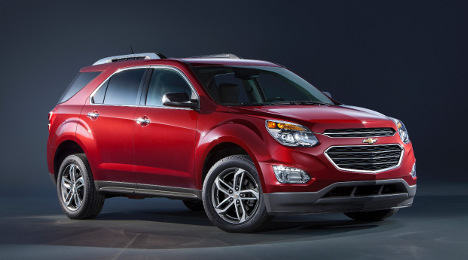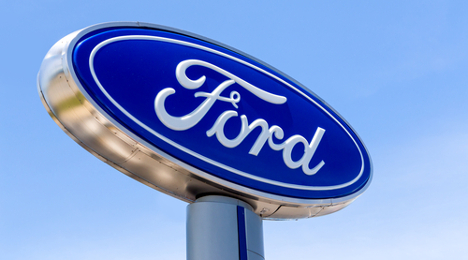Most of the off-lease volume that makes its way to Asbury Automotive Group stores this year will end up as certified pre-owned vehicle inventory.
“They’ll come mainly over a six-month period, and we look at that as an opportunity for us,” Asbury chief operating officer David Hult said during the retailer’s earnings conference call last week.
Turns out, Asbury is likely not alone.
Manheim’s 2016 Used Car Market Report indicates that swelling off-lease volumes should push already record-high certified sales to new heights in coming years.
New lease originations hit a record last year, nearly reaching the 4-million mark and beating the 2009 “cyclical trough” by 2.8 million units, the report said.
With six straight years of rising lease originations, look for off-lease volumes to have a “steady rise” over the next few years.
Manheim Consulting pinpointed off-lease volume for 2015 at 2.5 million units, with 2016 volume projected to reach higher than 3 million. They are then expected to eclipse 3.5 million units in 2017 and approach 4 million in 2018.
In the report, Cox Automotive chief economist Tom Webb (who authored the report) said that 2016 is expected to be another record year for CPO “as growing off-lease volumes provide both the need and ability for further growth.”
He adds in the report: “There is also the desire to grow CPO sales, since they enable dealers to protect gross margins, improve turn rates, or boost F&I and service income. And, when CPO programs are properly structured and effectively marketed by manufacturers and dealers, the programs can provide all three of those benefits simultaneously.”
Webb points that that CPO has “at the least the potential” to keep on greatly expanding, but that will largely depend on marketing from OEMs and dealer CPO profitability.
And keep in mind, the dealer is the one who decides to certify or not.
“And they’re going to make the decision on the basis of whether it’s beneficial to them, therefore it’s got to have a gross that takes care of the additional costs that are involved and are increased financing opportunities or increases the inventory turn rate,” Webb said in an interview with Auto Remarketing last week.
“But facing from the dealer’s standpoint, they have to understand and sell the program to the customer,” he added.
Speaking of consumer awareness, that has been a relatively hot topic as CPO continues to expand. So we asked Webb whether he finds it to be at a healthy level.
“I think there’s a general awareness and understanding, and that’s why it has been successful,” Webb said. “ I would say, however, that understanding is probably not all that deep in terms of, one, the differences between different programs — they’re certainly all not the same.”
After a fifth straight record year, the certified pre-owned car market began 2016 with a modest dip, as January sales fell 2.1 percent on a year-over-year basis.
But keep this in mind: January 2015 was the best January ever for CPO sales. And this past month was the second-best, according to Autodata Corp.
There were 190,951 CPO sales last month, which was down from 194,963 sales in the first month of 2015, according to Autodata.
And with just 24 selling days this past month, the daily selling rate was 7,956 units, which beat the 7,499 DSR last January (which had 26 selling days) by more than 6 percent, the firm said.
Asian brands increased CPO sales by 2.2 percent, moving 89,660 units. The Big 3 was down 4.8 percent with 69,304 certified sales in January, and European brands softened 7 percent with 31,987 CPO sales.
As of mid-day Tuesday, a few automakers had reported certified pre-owned sales from the first month of the year. The results thus far have been mixed.
Mercedes-Benz’s CPO program, for one, had its strongest January ever. Its 9,934 certified sales for the month were up 5.1 percent from last year.
MINI also had its best January for CPO, selling 855 units to edge out year-ago figures by 0.7 percent.
And Porsche posted 1,165 certified sales, which marked a 13-percent year-over-year hike.
But others were reporting slides.
The BMW division had 8,212 certified sales, which marked a 6.1-percent year-over-year decrease.
Volkswagen sold 5,721 certified cars in January, down 25.5 percent..
Volvo’s 1,122 CPO sales for January were down 16.7 percent from the opening month of 2015.
Mazda sold 2,596 certified vehicles for the month, down from 3,437 in January 2015.
Stay tuned to Auto Remarketing as additional automaker and overall industry CPO sales reports are filed.
Perhaps the gauntlet has been thrown by the Federal Trade Commission about claims automakers and dealerships make when it comes to promoting their certified pre-owned vehicles.
Jessica Rich, director of the FTC’s Bureau of Consumer Protection, offered a strong statement on Thursday during a conference call following an announcement about General Motors, Jim Koons Management and Lithia Motors all agreeing to settle separate administrative complaint allegations.
“These are three actions, but we really do hope these actions send a signal to the marketplace as a whole about the need to disclose unrepaired safety recalls, especially when you’re making bold claims about inspections that you’re undertaking or the safety that your used cars may have,” Rich said.
“We really want it to have widespread effects,” she continued.
The FTC indicated each company touted how rigorously they inspect their vehicles, yet failed to disclose that some of the used models they were selling were subject to unrepaired safety recalls.
“These actions stand for a simple proposition. Companies should not mislead consumers shopping for cars, especially when it comes to safety,” Rich said.
“Although dealer inspections can benefit consumers, and manufacturers and dealers may advertise these inspections, their ads can’t overstate the safety assurances that these safety inspections provide or deceive consumers about recalls and other important safety issues,” she continued.
“These cases also underscore the FTC’s continued commitment to protection consumers from deceptive advertising in the auto marketplace,” Rich went on to say.
Neither GM nor Koons nor Lithia faced any financial penalties in conjunction with the settlements. However, Rich pointed out the proposed consent orders remain in effect for 20 years. Each violation of such an order may result in a civil penalty of up to $16,000.
“In these cases, actions do not involve any fines or money remedies. However, if the companies do violate the orders, they could be liable for substantial civil penalties. We do monitor our orders very closely and we do take action when companies violate them,” Rich said.
“And violations can be calculated in various different ways. If a large company with many customers is engaged in violations, it could come to a very large number indeed,” she went on to say.
GM’s response
GM acknowledged in a filing with the Securities and Exchange Commission last June that the automaker received notice of an investigation from the FTC concerning certified pre-owned vehicle advertising where dealers had certified vehicles allegedly needing recall repairs.
On Thursday, GM spokesperson Jim Cain told Auto Remarketing, “We made changes to our certified pre-owned marketing program last year to address the FTC’s concerns, and we are pleased with the proposed resolution of the matter.”
Lithia officials declined to comment about the development when reached by Auto Remarketing on Thursday. Efforts to contact Koons for comment weren’t successful.
More FTC action ahead?
Rich indicated she couldn’t divulge how many more investigations in the CPO space are ongoing. But she acknowledged how the volume of vehicles needing recall repairs makes it possible that the regulator could be handing out more actions similar to what involved GM, Koons and Lithia.
“We don’t have an exact count but we do believe from the public reports we’ve seen that there may be millions of cars with unrepaired safety recalls that are being sold today,” Rich said.
“While we can’t comment on other investigations that are underway because they’re non-public, you may very well see other actions in this area,” she continued.
Rich reiterated Thursday’s announcements “are just part of the larger program we have to protect consumers in the automobile marketplace,” noting that the FTC has been involved in 40 cases to date
“This case addresses deceptive claims and failure to disclose critical information that would ensure the claims aren’t deceptive,” Rich said.
“Here, the companies made broad claims about rigorous inspections that involve safety without disclosing the potential existence of unrepaired safety recalls in the inventory of the cars they were selling,” she continued. “That, we allege, was deceptive.
“That’s why the companies are compelled under the orders to make prominent disclosures to consumers about the recalls,” Rich went on to say.
Federal Trade Commission officials said on Thursday that General Motors, Jim Koons Management and Lithia Motors all agreed to settle separate administrative complaint allegations from the regulator.
The FTC indicated each company touted how rigorously they inspect their vehicles, yet failed to disclose that some of the used models they were selling were subject to unrepaired safety recalls.
The FTC’s complaint against GM cites the company’s representations for certified pre-owned vehicles such as when the automaker claimed:
“Our 172-Point Vehicle Inspection and Reconditioning Process is conducted only by highly trained technicians and adheres to strict, factory-set standards to ensure that every vehicle’s engine, chassis, and body are in excellent condition. The technicians ensure that everything from the drivetrain to the windshield wipers is in good working order, or they recondition it to our exacting standards.”
The FTC alleges that GM advertised numerous CPO vehicles at its local dealerships using these claims without disclosing that certain used vehicles offered for sale were subject to previously announced open (unrepaired) recalls for safety issues.
According to the FTC’s complaint, those vehicles subject to recalls had defects that can cause serious injury, including a key ignition switch defect that can affect engine power, power steering, braking and airbag deployment, problems in the body control module connection system that can affect braking, and chassis electronic module defects that can cause engine stalls.
The FTC’s complaint against Jim Koons Management Company, which also does business as Jim Koons Automotive Companies, involves the company’s purported “guarantee” that “every certified Koons Outlet vehicle must pass a rigorous and extensive quality inspection before it can be sold. Our certified mechanics check all major mechanical and electrical systems and every power accessory as part of our rigid quality controls.”
The complaint alleges that some vehicles were subject to unrepaired recalls, including those involving the key ignition switch, alternator-related defects that could cause unexpected vehicle shutdown or an electrical fire, and a rear suspension defect that could result in a fuel leak or fire.
Jim Koons Management has 15 dealerships in the Mid-Atlantic region.
The FTC’s complaint against Lithia cites claims for its dealer-backed “60- Day/3000 Mile” warranty, including:
“ . . . vehicles are put through an exhaustive 160-checkpoint Quality Assurance Inspection. We inspect everything from the tires and the brakes to suspension, drive train, engine components and even the undercarriage.”
Nonetheless, the FTC complaint alleges, some of the vehicle Lithia advertised were subject to unrepaired recalls involving defects in the key ignition switch and other safety issues.
Lithia operates more than 100 dealerships
Under the proposed consent orders, which would remain in effect for 20 years, the FTC said the companies are prohibited from claiming that their used vehicles are safe or have been subject to a rigorous inspection unless they are free of unrepaired safety recalls, or unless the companies clearly disclose the existence of the recalls in close proximity to the inspection claims.
The regulator added the proposed orders also would prohibit the companies from misrepresenting material facts about the safety of used vehicles they advertise.
These proposed orders will also require the companies to inform recent customers, by mail, that their vehicles may have an open recall.
For GM this requirement applies to CPO vehicles purchased between July 1, 2013 and the final order date.
For Lithia, this requirement applies to Lithia Warranty used vehicles purchased during the same time period.
For Koons, it applies to certified used vehicles purchased between July 1, 2013 and June 15 of last year.
“Safety is one of the biggest considerations for consumers shopping for a car,” said Jessica Rich, director of the FTC’s Bureau of Consumer Protection.
“So companies touting the comprehensiveness of their vehicle inspections need to be straight with consumers about safety-related recalls, which can raise major safety concerns,” Rich continued.
Ford Motor Co. announced Tuesday that all Ford Rangers from model years 2004 to 2006 are now recalled for potentially faulty driver-side airbag inflators. This follows news of an estimated 5-million-vehicle expansion of the series of Takata airbag inflator recalls revealed Friday
Ford's action affects a total of 391,394 Rangers, 361,692 of which are in the United States and its territories while 29,334 are in Canada.
A release from Ford says that the company is aware of one report of a death related to a Takata airbag deployment.
The National Highway Traffic Safety Administration discussed the expanded Takata recall in a conference call with the media on Friday, pointing to the fatality of a South Carolina man whose death was linked to an airbag rupture during a wreck involving his 2006 Ranger in S.C. in late December.
According to Gordon Trowbridge, NHTSA's communications director, the recall expansion is due to both this fatality, which he classified as a "field rupture" involving a Takata SDI model inflator, as well as test data showing ruptures in Takata PSDI-5 model inflators.
“That makes that crash the ninth Takata-related fatality in the United States and the 10th globally,” Trowbridge said. “All of these deaths are tragic. There is nothing that we at NHTSA can say or do that will lessen the pain for the affected families. And this latest news is a sad reminder of the immense scope of this problem and why we need to take unprecedented steps to resolve it.”
The model year 2004-2006 Rangers were already under recall for defects in their Takata-sourced passenger-side airbag inflators.
In email correspondence with Auto Remarketing, Trowbridge said that NHTSA believes that Takata's recent filing involving its PSDI-5 model inflators will affect Honda, Audi, BMW, Mercedes Benz, Saab and Volkswagen. The filing involving its SDI model infaltors are expected to affect Audi, Daimler Trucks, Ford, Mazda and Volkswagen.
There were 2.55 million certified pre-owned vehicles sold in the U.S during 2015, according to Autodata Corp.
Full disclosure: Two of them will be parked in front of my home this evening.
I won’t tell you their brands or which dealerships they were purchased from, but I will tell you the biggest selling point for me (as a consumer, not a journalist).
It was the peace-of-mind. Buying a used vehicle can be kind of scary, so knowing that the cars had been thoroughly inspected and had OEM backing was reassuring.
But that’s just me and my wiring as a car owner. Reliability, safety and assurance are how to win me over. Some people may favor the practicality or the perks like satellite radio trials or roadside assistnace.
And as someone who covers the CPO market on a regular basis, I was well aware of what certification offers even before the salesperson told me. I’m no expert on CPO, but I do get to interview folks who are. And I’d like to think my awareness of and openness to certified are on the higher end.
All that to say, I didn’t need much convincing about the pros to CPO.
Some used-car shoppers will, I imagine, if only because they simply might not be aware.
According to the 2015 Autotrader CPO study, just 45 percent of used shoppers were familiar with CPO in 2014. And while there has been improvement, familiarity was still only at 49 percent in 2015.
There is certainly potential to grow those numbers. Consider, for instance, the new-vehicle side. Autotrader said in the study that 77 percent of new-car shoppers were familiar with CPO in 2015, up from 75 percent in 2014.
And of those used-car shoppers who know about CPO, 82 percent thought positively of it. That’s up from 73 percent in 2014, the study said.
Consideration for CPO among used-car shoppers also climbed from 50 percent to 68 percent in that time frame, according to Autotrader.
Overall, almost two-thirds (64 percent) of the people surveyed by Autotrader said they would consider CPO because of the peace-of-mind from the warranty and inspection process, up from 58 percent in 2014.
So, maybe a lot more folks are like me are finding that reassurance important. But to reach them, you’re likely going to have to educate them.
Almost exactly a year ago, I talked with vAuto founder Dale Pollak at the 2015 NADA Convention & Expo in San Francisco. The CPO industry has since gone on to post a fifth straight year of record sales (and likely improved its educational/awareness efforts), but i think his thoughts on addressing and emphasizing the peace-of-mind element of certfied cars still rings true.
“CPO is strong. I believe in CPO, and I think CPO will continue to get stronger,” Pollak said in the January 2015 interview. “The reason being — like this is a big surprise, ready for this? — every buyer of a used car has a fear of getting a bad car.
“All you have to do is speak to that fear, which well-designed and well-marketed CPO programs do, and you’re going to be rewarded. And I think it’s taken a relatively long time for the buying public to really understand what certification is, and what it’s not,” he continued. “It takes it a good long while, and it’s reaching that moment or point of inflection where consumers actually get it.”
With more than 235 model options in the new-vehicle marketplace, customers shopping in that arena are a bit spoiled for choice. Understanding what customers are drawn to, and, perhaps more importantly, turned off by, can be what sets a good car apart from a great car.
That’s where the annual J.D. Power Avoider Study comes in, and this year its analysis has shown an increased concern for vehicle reliability.
According to the study, which surveyed nearly 26,500 owners who registered a new vehicle in April and May of last year, 55 percent said that vehicle reliability was a leading reason for their purchase, up from 51 percent in the previous year’s study.
Looking at it from the opposite angle, 17 percent said perceived reliability was a chief reason why they avoided a certain vehicle, versus 14 percent the previous year.
"Though vehicle reliability and durability have improved significantly over the years, they remain a vital consideration for consumers," said Dave Sargent, vice president, quality practice, J.D. Power. "With so many auto recalls in the news and challenges with the introduction of new technology, consumers are even more attuned to the expected reliability of new vehicles.
“This impacts which models consumers avoid and which ones they ultimately purchase,” he continued. “Bad news can tarnish an automaker's reputation in an instant, yet, can take years to build back up. Automakers need to convince consumers of the true reliability of their vehicles so it is not a reason to avoid selecting a particular model."
Above reliability, exterior and interior styling still remain the top two most frequently cited reasons for buying a vehicle.
Lower gas prices also appear to have made an impact on consumer preferences, as J.D. Power points out that 51 percent of shoppers factored in fuel economy when purchasing their vehicle in 2015, down from 55 percent in the previous year.
Although nothing new, another issue that has stuck around is the fact that some shoppers tend to change brands because they simply want to try something new.
"This is a major challenge for auto marketers," Sargent said. "In the auto industry, building consumer trust, loyalty and advocacy is paramount to ongoing success. However, there are so many great vehicles available to consumers that merely satisfying your customers is simply the cost of entry.
“To truly succeed, automakers must keep their exterior and interior designs fresh, ensure competitive performance and fuel economy levels, offer an array of advanced technology and achieve an excellent reputation for vehicle reliability."
Here are a couple more key findings from the report, as listed by J.D. Power:
- Car Buyers Doing Less Window Shopping: Since 2012, new-vehicle buyers are considering fewer models and shopping fewer dealers. On average, buyers physically shop only three models, one of which they buy.
- Domestic Brands vs. European and Asian Brands: There remains a significant disconnect between perception and reality regarding the reliability of domestic brands compared with European and Asian brands. Avoidance of domestic models due to reliability concerns (24 percent) is nearly twice that of European (13 percent) and Asian (12 percent) models. In reality, the actual reliability of most domestic models is competitive with that of their import competitors.
Many companies, including dealerships, tend to tout company culture as part of their recipe for success.
Not very many, however, tend to survive three generations of familial torch bearing and reap the rewards quite in the same way as Ohio’s Ricart Automotive Group.
It started with Paul Ricart on Independence Day in 1953 as a single-point Ford franchise in Canal Winchester, Ohio — with four cars and one garage.
And these days? In late 2015, the dealer group was expecting to have retailed roughly 8,500 used vehicles out of its Ricart Used Car Factory by the end of the year.
As part of this year’s “Leading Dealer Groups” issue, Auto Remarketing spent some time talking with Rick Ricart, third-generation member of the group as well as its current vice president of sales and marketing, to see if he could share some sales tips.
Cutting straight to the issue, we asked Ricart what his group’s overall sales strategy is, distilled down into one statement.
“We are very, very consistent with everything we do. We have consistent training. We have a consistent culture,” Ricart said. “But we are dynamic when it comes to each individual customer as we engage them because there are so many types of buyer today depending on how much research they’ve done and everything.
“I would say our strategy is, ‘sustainable growth through consistent processes, by treating each individual customer based on their needs and demands.’”
Well, that seems to make sense — consistent culture, dynamic approach to customer service — but how is that achieved? To start off, Ricart says one key to obtaining quality sales men and women for his new and used stores is to, well, not hire people who have done it before.
“Four years ago now, I adopted a policy where we don’t hire car salesmen,” he said.
How does that work? For starters, Ricart says they don’t hire the “transient” car salesmen that tend to bounce around from dealership to dealership, spending six months or so at one business before moving on to the next — an issue that he says has plagued the Columbus area in the past.
“What we decided was we were sick of hiring people that had been taught bad habits, that had been taught to lie, cheat and steal,” Ricart said. “What we really need are people that are focused on customer service and that don’t have the entitlement of a lot of millennials that refuse to work 40 hours a week, or work weekends, or work nights. So four years ago we took a strategic move and started hiring from the service industry.”
That’s right — former servers, bartenders, hotel front-desk staff, valets — that’s the Ricart sales staff’s bread and butter.
“We found people that have the personality, the customer service training, the character — and brought them into the car business,” he said.
To Ricart, today’s business isn’t about learning how to be a salesman. It’s about letting the customer, who, more often than not, has come into the store following an incredible amount of research, take the reins and have the sales staff simply help them find what they’re looking for.
In fact, that’s exactly how Ricart’s management phrases it to their sales staff. Of Ricart’s 550 employees across its new and used stores, 62 are sales people in the Ricart Used Car Factory. And they’re not allowed to sell anything.
“That’s what we tell them all the time, ‘you’re not to sell a car today. But you’re to let two or three people buy a car that you meet,’” Ricart said.
‘Family owned and people driven’
That “internal tagline” is what Ricart attributes to his company’s cohesive culture — the reasoning behind its ability to retain many of its employees long term and give them a feeling of openness and honesty.
“We are very employee-centric. We don’t shun them for sharing ideas, criticism,” he said. “We let our employees take ownership in their job and the dealership itself. And we have a lot of long-term employees that help reiterate all of those culture-based programs that we do. And we actually have an in-store employee engagement director.”
In an environment where employees take ownership of their positions and care for the overall well-being of the business, Ricart says this helps make his job easier.
“It allows me to do my job better because I’m not worried about what I say, because everything is very honest and transparent and open with everyone,” he said. “Management truly defends the employees, as well.”
Another tip that Ricart gave for dealers is that if you want to build a fan base for your dealership, you have to start with your own employees.
“We learned years ago when we started our culture change that if the employees aren’t advocates of the dealership the customers never will be,” he said “That sounds crazy, but I remember five years ago there’d be someone that worked in the service department that didn’t want to buy a car from the company they worked for because they didn’t get along well with the used-car department.
“It gave us a lot of opportunity to improve those things. You need to make sure that every employee is proud of where they work.”
Success of the used-car recon department
Speaking with Auto Remarketing in late December, Ricart said the turn-time that week in the Ricart Used Car Factory’s reconditioning department was currently 5.2 days, with its peak at one point as low as 3.9 days. The recon team, which utilizes the Motor Trend Certified Vehicle program, tries to get each vehicle show-ready in less than four days so it can go into the “photo lab,” where each vehicle gains 27 high-quality photos and is put online for sale.
Ricart says he enjoys the program because, instead of having six different teams, one for each make, he has one team certifying all of the Factory’s vehicles. That one team, with 20 technicians designated to used vehicles, shares 14 service bays and performs the same inspection on each vehicle. He says the recon department has come a long way — when they first started tracking turn time on vehicles, they stood at 11 days.
The goal of “sustainable growth” is exactly what is reflected in his Used Car Factory’s sales figures. At the end of November, it had sold exactly 7,787 used vehicles in 2015, an over 700-vehicle increase over the first 11 months in 2014 (7,054 used-units retailed) and roughly tying the overall sales figure for 2014. Speaking conservatively, Ricart says the Factory was expected to end the year at 8,400 to 8,500 used units retailed, a 10-percent jump over last year’s figures.
Ricart says he knows the Factory could retail quite a bit more — but the focus is currently on quality over quantity.
“We’re looking for sustainable growth,” he said. “We could go buy a whole bunch of cars as cheap as we can and lose money to market them and say, ‘Hey, we sold 10,000 cars this year.’ But if you don’t sell 10,000 or more next year, then it was false pride, or whatever you call that.”
You can expect certified pre-owned sales to reach the 3 million mark next year, which would push the string of record years for this growing market to seven — just as off-lease volumes really begin to ramp up.
According to data in a Cox Automotive presentation Sunday in Detroit, later shared with Auto Remarketing, CPO sales should increase this year and then yet again in 2017.
The Manheim Consulting graph included in the presentation predicts between 2.5 million and 3.0 million CPO sales this year, which would follow the record 2.55 million from 2015.
“Given the increased availability of inventory that fits that CPO market — i.e. off-lease units — there’s both the need and the desire to increase those CPO sales, and I think it will be achieved,” Cox Automotive chief economist Tom Webb said in his quarterly conference call last week (which preceded the Detroit event) when asked by a reporter about his expectations for CPO sales this year.
“As always, it’s just dependent on how much marketing dollars, and maybe carrots and sticks, that the OEMs might want to put behind their programs, and of course the ability of dealers to make an adequate gross on those units,” he continued.
If Manheim Consulting’s projections come to fruition, however, it would mean seven consecutive best-ever years for certified.
And perhaps more could be on the horizon, especially when you consider that off-lease volume will likely approach 4 million units in 2018, according to Manheim Consulting data in Sunday's presenation. There are just over 3.5 million off-lease units projected for 2017 and more than 3 million expected this year.
One wrinkle to the certified sales picture, however, could involve the dynamics between new and CPO. That’s something Autotrader senior analyst Michelle Krebs discussed during a monthly conference call with the media on Jan. 5, one day before Autodata Corp. released its data set of 2015 full-year certified sales.
“It’s a record this year. It’ll be a record next year. It’ll be a record the next year after that,” Krebs said of the CPO market. “That’s what we’re anticipating: a continued upward climb. So, I think the question is, ‘OK, do consumers gravitate more toward CPO cars? Is that going to steal some new-car sales?’”
It may be a bit early to answer that, but consider the choices shoppers could be making.
From the consumer standpoint, Krebs said, they may have some additional considerations to weigh when deciding between new and CPO. It’s also important to note the role incentives could play in that decision, she said.
“I mean, they always look at new and nearly new, but there will be more reason to do that,” Krebs said. “And in some cases, if we see incentives continue (to be) high, there may be a reason to buy a new over a CPO. So, it’ll be a really interesting year of which (way) do consumers go in terms of CPO or new.”












